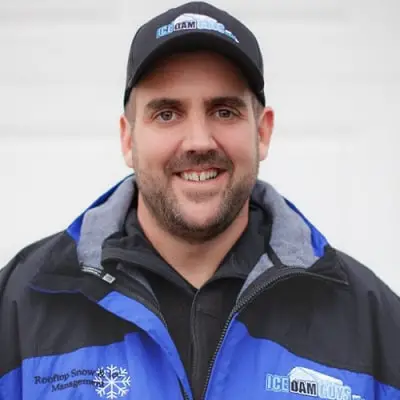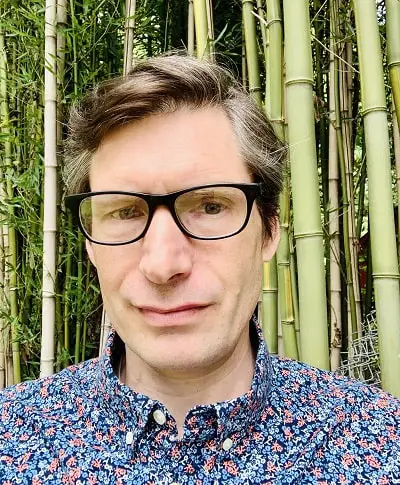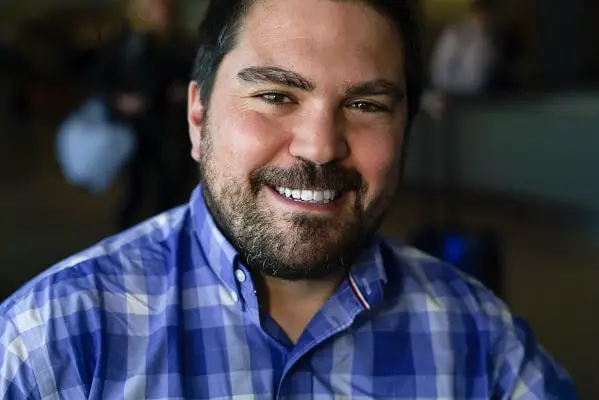Day in the life of
Neuroscientist – Katherine Roe, PhD

I’m a neuroscientist, but instead of working in a laboratory and designing experiments, I work with PETA on developing evidence-based strategies to replace animals in scientific research.
My typical day
On a typical day, I’ll meet with members of congress, journal editors, and scientists, shareholders in pharmaceutical companies, and university leaders to discuss ethical and scientific concerns about animal experimentation. A lot of what I do is about opening minds and getting a productive conversation started with other scientists and decision-makers. I attend scientific and animal welfare conferences and workshops as well as give lectures and write papers and articles on the controversies surrounding the use of animals in laboratories. I review current experiments on animals and identify viable non-animal alternatives (like epidemiological studies, human neuroimaging studies, and stem cell-based models like organoids and organs on chips) for laboratories to consider. I also look at how useful and effective common animal “models” are, such as the use of mice for stroke and cancer studies, and how these models don’t often do a good job of showing us what happens in humans.
As a scientist, it’s important for me to get that information out so that the scientific community and other decision-makers, like government agencies, can make better choices about how money and resources for research are being used. And a big part of what I do is supporting young people who want to pursue scientific careers but don’t want to experiment on animals.

Yale talk
Pros
One of the highlights of being in the neuroscience field stems from the fact that it is VERY new. There is so much about the human brain that we still don’t understand, there are so many interesting and important questions to be answered. The field is very dynamic, with new exciting discoveries emerging all the time and changing the way we view brain function. The technology for studying the human brain has advanced so much just in my lifetime. In my very first research project, I wanted to try and find out how the two cerebral hemispheres processed language differently. To do this, I had to use what is called a “visual field paradigm” and work with individuals who had brain injuries. By the time I received my PhD, I had started using what at the time was a brand new tool called functional MRI, where we can measure blood oxygenation levels in different parts of the brain while individuals are performing a particular task. When I conducted work at the National Institutes of Health (NIH), the human imaging tools had become even more advanced, and I was able to use multiple imaging tools to understand the brain, including high resolution fMRI, MEG, PET imaging, and DTI tractography. Now we can study the brain by using transcranial magnetic stimulation (TMS) as well as brain models derived from stem cells, including miniature brain organoids, and brain-on-chips.
Cons
In all biomedical research fields, there is a constant pressure to get funding and publish results. While on the surface this makes perfect sense, it can actually be detrimental to the quality of science. Data analysis can get rushed, teaching and mentoring younger scientists can get deprioritized, and researchers can end up feeling like they don’t have the time they need to really think about their research goals and take measures to truly achieve them. The goals become getting grants and publications instead of meaningful answers. Since the field of neuroscience is so dynamic, it is important for researchers to stay on top of the newest data and technology, but if they are under so much pressure to publish, they often don’t have the time and energy to master new tools and incorporate them into their research projects. Unfortunately, this pressure often leads to unnecessary experiments on animals.
Too many young researchers begin their careers by using and killing animals with the goal of helping humans, only to find out later that their results fail to help humans at all. The data are clear: 95% of new drugs deemed safe and effective in animals turn out not to be safe or effective in humans. Animal tests fail to detect the potential side effects of drugs in humans 81% of the time, and 90% of basic research fails to lead to any human therapies within 20 years. Data from up to 89% of experiments cannot even be reproduced in different laboratories, resulting in the waste of approximately $28 billion a year spent on preclinical research that may be inaccurate or misleading. The failure of animal experiments with respect to specific diseases paints an even grimmer picture: Treatments for strokes and sepsis tested in animals have had a devastating 100% failure rate in humans. Alzheimer’s disease treatments developed in animals fail 99.6% of the time in humans. Oncology drugs tested on animals have a success rate of only 3.4%. Decades of harmful and expensive experiments that involve infecting monkeys and other animals with HIV and similar viruses have yet to produce an effective vaccine for humans.
Many young researchers also begin their careers believing that they will be able to switch from experimenting on animals to pursuing more clinically relevant work at a later stage of their career, only to find themselves entrenched in the use of unsuccessful animal models, having never mastered any of the various animal-free methods that are currently available. And the pressure to get tenure, federal funding and publications often trap investigators into using the tools they are most familiar with, even if those tools are not allowing them to meet their scientific goals.
Advice for students interested in this career path
If you are interested in pursuing a career in science, you will typically need to get a post-graduate degree. Getting good grades will help you get into a good graduate program, but it is very important to get as much research experience as possible. Ask your professors if you can volunteer in their laboratories, and spend summers working in a lab if possible. Now that the neuroscience field has exploded, it is possible to get an undergraduate degree IN neuroscience, but most older neuroscientists have undergraduate degrees in biology, psychology, or chemistry. In reality, you can get your undergraduate degree in anything you like (one of my best friends in grad school got a degree in art history before becoming a neuroscientist). You will just need to take some core science courses along the way and definitely get some research experience.
It is important for young scientists and medical professionals to know that it is NOT necessary to test on animals, either to get your education or to pursue a research career. Many young scientists, veterinarians, and medical students feel instinctively uncomfortable with the idea of causing harm to animals for educational and/or research purposes. However, they are often asked to suppress those instincts. Well-meaning mentors and professors will justify the use of animals in experiments by invoking the possibility of discovering new treatments or cures for human illness. What is left out of those discussions is that the usefulness of data from animal experiments is extremely limited. The crucial differences in physiology between species, the unnatural laboratory setting, and the negative effects of captivity and chronic stress on the physical and psychological health of animals used in experiments all lead to an abject failure to find safe, effective treatments or cures for humans. Students who do not want to dissect or experiment on animals can and should opt-out. There are so many training and research alternatives available, and individuals can complete their education and their research goals without harming animals.






